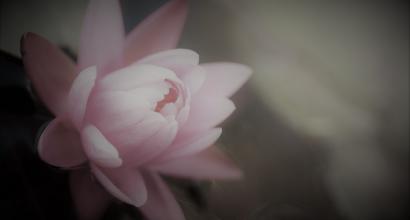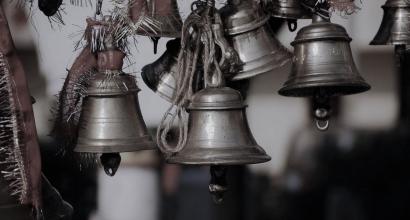Unspirited Functioning
Despite all this, the administration showed no increase in its spirit and enthusiasm. I have thought about its reason. In my view, it was the lack of intensity, drive, and spirit of freshness in people, which caused this. Let me quote an example.
By nature, Narasinga Rao Purnaiah [i.e. Krishnamurti] was a great person. He was a generous man who carried a serious disposition and was a well-informed reader of books. His eyes had lost their sharpness. Yet he would closely read and grasp the most difficult of treatises.
He had a high regard for me. He had himself ordered me to visit him at Pūrṇa Prāsāda not less than twice a week and spend at least some time in conversation. Accordingly I would regularly visit Pūrṇa Prāsāda and I shall precisely narrate an experience from those visits.
In a large room upstairs, Narasinga Rao Purnaiah would be in the company of five or six of his friends. The moment I stepped across the threshold into the room, one of his friends informed him that ‘such-and-such a person’ had come. Expressing happiness and asking me to be seated, Narasinga Rao Purnaiah would instruct one of his servants, “Arrange for the refreshments to be brought.” That servant would instruct another, “Krishnacharru, go fast!” This Krishnacharya would walk two or three steps and instruct Ramacharya and Ramacharya would walk five steps and order Gundacharya, “Fast!” All these would be audible to me. After ten or fifteen minutes, one of them would bring the refreshments in a plate. Following him, another would bring water. The third would bring coffee. By this time another friend would arrive. He too would be served refreshments the very same way.
Two or three of the stewards who would bring the refreshments upstairs from the ground floor, would firmly stand midway. Likewise, if five or six guests arrived, five to six of the servants would stand right there, to hear them talking. Waiting and watching what the groups of great men speak to their master itself was the job of those four or five people.
That’s not all. Let us assume someone brought up the name ‘Excise Commissioner’ during the conversation. At that very moment, one of the acharya-s would say, “He’s not in town. He has gone towards Shimoga.”
Another acharya would say, “Not towards Shimoga, it is towards Kolar!”
In this manner, the conversation would digress from a certain place to some place unknown. No strictness, no boundaries. Everyone’s mind wavered like a paper kite cut from its string. There was no result to anyone. The feeling of ‘We spoke’ was in itself a sense of solace to those who spoke.
A Mishap
During Krishnamurti’s tenure, although there was not much of a difference in either the administration or in the people’s conditions, a certain incident pertaining to newspapers and freedom of citizens is worth remembering. None of the newspapers displayed much enthusiasm about the Dewan’s activities but a few of them criticized him quite bitterly. In the Mysore Standard, which was published twice a week, and in Naḍègannaḍi, its sister concern, the articles were quite caustic and acerbic. M Srinivasa Iyengar and his brothers were the editors of these newspapers. They were all Mysoreans.
On the first day of the Citizens Representative Assembly’s session in Mysore (1904–5), M Krishna Iyengar—the Mysore representative of the Mysore Standard—once came to the place meant for correspondents. He was told that there was no place for him there and was ordered by the officials to leave the forum and go away. Everyone was taken aback by this behavior. And that was also criticized in a few newspapers.
A few weeks later, in the middle of the night, somebody attempted to rob the Mysore Standard’s printing press in a building located to the west of Tippu Sultan’s palace near the Āñjaneyasvāmī Temple in the Bangalore Fort area. Apart from pulling out a bale of papers and setting it on fire, the miscreants ransacked documents and letters in the office; their intent perhaps was to find out who were all writing articles for the newspaper.
The police department appeared to be negligent about this incident. No facts came out of the investigation. The rumour on the streets was that either a strong admirer of the Dewan or someone who wanted to please the officers was behind this wicked deed. Whoever they might have been, whatever might have been their intent, that incident didn’t brighten Krishnamurti’s success.
Cordiality
When I first met Krishnamurti, perhaps six or seven years had elapsed since his retirement from the position of the Dewan.
That day, there was some feast at the Pūrṇa Prāsāda. Many brāhmaṇas of the Mādhva sect had graced the occasion. Around two hundred to two hundred and fifty people were there. Even though I desire to describe the grandeur of the feast, it is quite an impossible venture. This is one of the areas in which I have not gained expertise. However, I can mention another thing. If people from the year 1969 hear about those arrangements, I’m afraid, they might feel jealous about their ancestors and perhaps even ridicule them as being gluttonous. That was when I had the chance to observe the sort of generosity and reverence that Krishnamurti had in his personal life. He personally observed every row of guests [who were partaking of their meal] and attending to them with great affection.
Accusation of Partiality
People used to privately make an accusation that during Krishnamurti’s tenure Mādhva brāhmaṇas grew strong. I am given to believe that Krishnamurti was, however, not the reason for it. Be it in spirit or in governance, Krishnamurti was never knowingly partial. He never brought an incompetent person to a place that demanded quality and competence.
But there was something unique. If one observed Krishnamurti’s retinue that surrounded him at all times, there would be room for slight suspicion. In the vicinity of Pūrṇa Prāsāda, there was a small shrine of prāṇa-devaru [Hanumān] to the East. I have heard that it still exists. However, it has considerably shrunk. It must be around nine or ten square feet in area. During Krishnamurti’s time, that shrine used to be half to three-quarters of a furlong away from the main building of Pūrṇa Prāsāda. There used to be a pond in between. Every evening at the shrine, there would be maṅgaḷārati and bhajans. Krishnamurti and his younger brother Purnayya used to come along with their families for the maṅgaḷārati. After that, some devotee would offer a devaranāma. At this point, a few fanatics used to sing thus –
ಎದ್ದೆದ್ದು ವದೀತಾನೆ ಮಧ್ವರಾಯ
ನಮ್ಮ ಮಧ್ವರಾಯ ನಮ್ಮ ಮಧ್ವರಾಯ||
ಅದ್ವೈತಿ ಭಂಡನ್ನ ಸ್ಮಾರ್ತರಂಡೀಗಂಡನ್ನ
ಎದ್ದೆದ್ದು ವದೀತಾನೆ ಮಧ್ವರಾಯ
ನಮ್ಮ ಮಧ್ವರಾಯ ನಮ್ಮ ಮಧ್ವರಾಯ||
Madhva-rāya will jump up and kick—
Madhva-rāya, our Madhva-rāya—
the shameless advaitin, the whore-husband smārta!
Madhva-rāya will jump up and kick,
Madhva-rāya, our Madhva-rāya!
They would sing this in rhythm. Those singing and listening would exchange glances and make signs with their eyes. Had it been sung privately, it might have gratified those who were singing. However, their actions, intending to achieve another kind of fulfillment, were out in the open; this came to the notice of non-Mādhvas and brought dishonor to Krishnamurti’s name. When someone brought this to Krishnamurti’s attention, he rebuked those devotees and apparently had the practice stopped. However, what had happened had happened. Due to this, a bit of disgrace inevitably crept in.
In fact, Krishnamurti was an admirer of Sanskrit scholars and the ancient śāstras. He used to convene scholarly circles from the three schools of Vedānta[1] and honour the scholars. His circle of friends included many esteemed non-Mādhva gentlemen such as H V Nanjundayya and M Venkatakrishnayya. Krishnamurti had once welcomed the jagadguru of Śṛṅgeri to Pūrṇa Prāsāda, performed pāda-pūjā[2], and served a feast.
There are many such instances that prove that Krishnamurti did not carry any sectarian prejudices.
In his individual conduct, he was modest, graceful, pious and pure.
This is the second part of a two-part English translation of the fifth chapter of D V Gundappa’s Jnapakachitrashaale – Vol. 4 – Mysurina Diwanaru. Edited by Hari Ravikumar.
Footnotes
[1] The three popular schools of Vedānta are Advaita, Viśiṣṭādvaita, and Dvaita.
[2] A ritual of offering worship (pūjā) to the feet (pāda) of the Supreme, or a guru, or any esteemed personage.











































